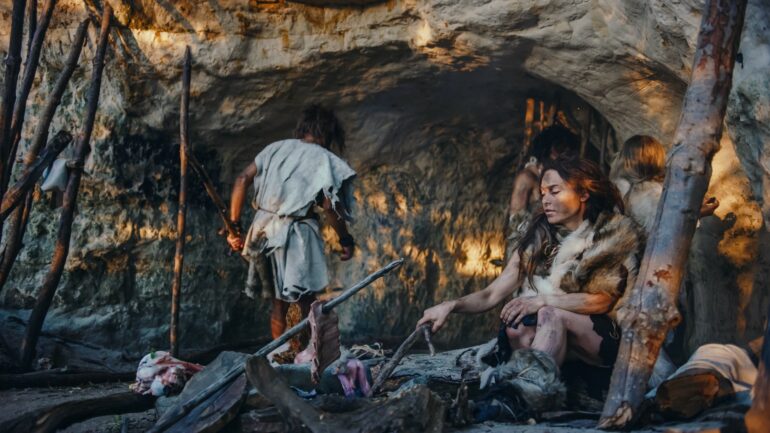Prehistoric men hunted; prehistoric women gathered. At least this is the standard narrative written by and about men to the exclusion of women.
The idea of “Man the Hunter” runs deep within anthropology, convincing people that hunting made us human, only men did the hunting, and therefore evolutionary forces must only have acted upon men. Such depictions are found not only in media, but in museums and introductory anthropology textbooks, too.
A common argument is that a sexual division of labor and unequal division of power exists today; therefore, it must have existed in our evolutionary past as well. But this is a just-so story without sufficient evidentiary support, despite its pervasiveness in disciplines like evolutionary psychology.
There is a growing body of physiological, anatomical, ethnographic and archaeological evidence to suggest that not only did women hunt in our evolutionary past, but they may well have been better suited for such an endurance-dependent activity.
We are both biological anthropologists. Cara specializes in the physiology of humans living in extreme conditions, using her research to reconstruct how our ancestors may have adapted to different climates. Sarah studies Neanderthal and early modern human health, and excavates at their archaeological sites.
It’s not uncommon for scientists like us – who attempt to include the contributions of all individuals, regardless of sex and gender, in reconstructions of our evolutionary past – to be accused of rewriting the past to fulfill a politically correct, woke agenda. The actual evidence speaks for itself, though: Gendered labor roles did not exist in the Paleolithic era, which lasted from 3.3 million years ago until 12,000 years ago. The story is written in human bodies, now and in the past.
We recognize that biological sex can be defined using multiple characteristics, including chromosomes, genitalia and hormones, each of which exists on a spectrum. Social gender, too, is not a binary category. We use the terms female and male when discussing the physiological and anatomical evidence, as this is what the research literature tends to use.
Female bodies: Adapted for endurance
One of the key arguments put forth by “Man the Hunter” proponents is that females would not have been physically capable of taking part in the long, arduous hunts of our evolutionary past. But a number of female-associated features, which provide an endurance advantage, tell a different story.
All human bodies, regardless of sex, have and need both the hormones estrogen and testosterone. On average, females have more estrogen and males more testosterone, though there is a great deal of variation and overlap.
Testosterone often gets all the credit when it comes to athletic success. But estrogen – technically the estrogen receptor – is deeply ancient, originating somewhere between 1.2 billion and 600 million years ago. It predates the existence of sexual reproduction…



